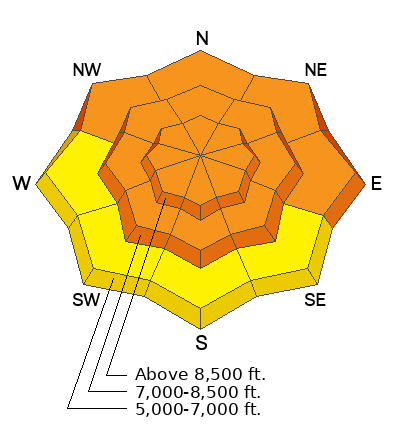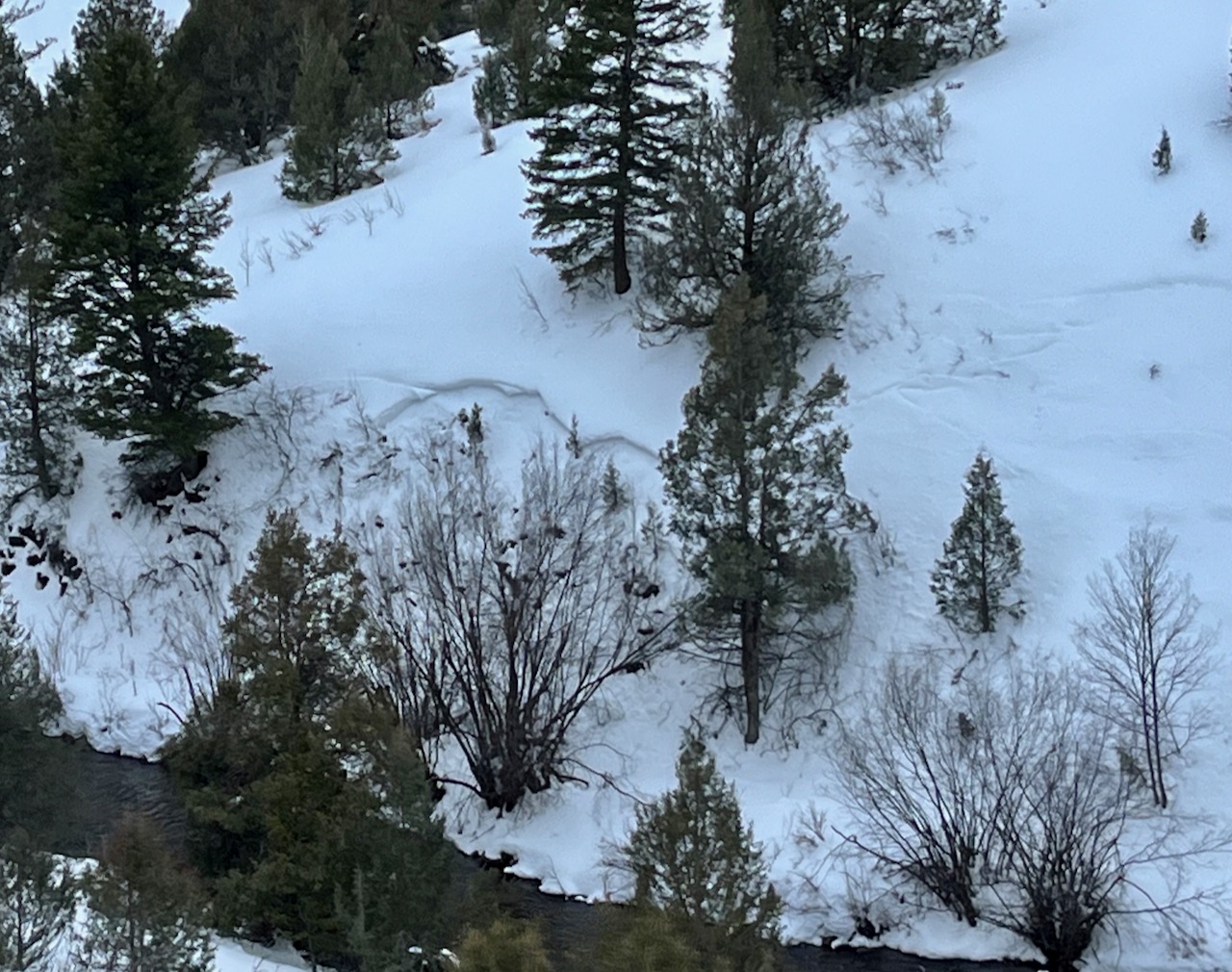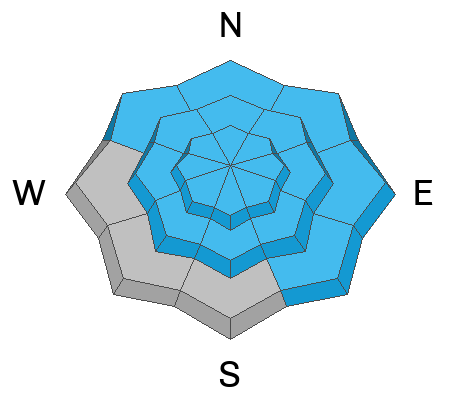We are in a tricky time as the snow slowly stabilizes and avalanche danger slowly decreases. Warning signs are fewer, but real potential exists to trigger an avalanche. We are still experiencing and getting reports of widespread collapsing due to poor snowpack structure on all aspects and elevations. Human-triggered avalanches are still likely and could be large and destructive. But there's a silver lining - with excellent coverage across the zone, it is easy to find safe terrain (slopes less than 30 degrees) to play on. With recent warm temperatures, low-elevation snow is damp and sticky. You'll need to get above 7500' to find drier snow.
Winds are blowing 10-20 MPH from the south-southwest this morning at the 9700' CSI Logan Peak weather station. At 9500' on Paris Peak, the wind is calm and it’s 21°F. The Tony Grove Snotel at 8400' reports 27° F and 81 inches of total snow containing 132% of normal SWE (Snow Water Equivalent).
We'll have a break in the weather today with mostly cloudy skies and a few flurries but little accumulation. Temperatures will remain warm with an 8800' high of 32° F and winds will be light from the south. We'll see unsettled weather for the rest of the week with gradually cooling temperatures and a few inches of snow. Sunshine is expected to return this weekend.
We've received no reports of avalanches since 1/18/24.
Over the weekend, we noticed this
avalanche next to the river across from the Dugway that was likely remotely triggered last Thursday.
Check out local observations and avalanches
HERE.










